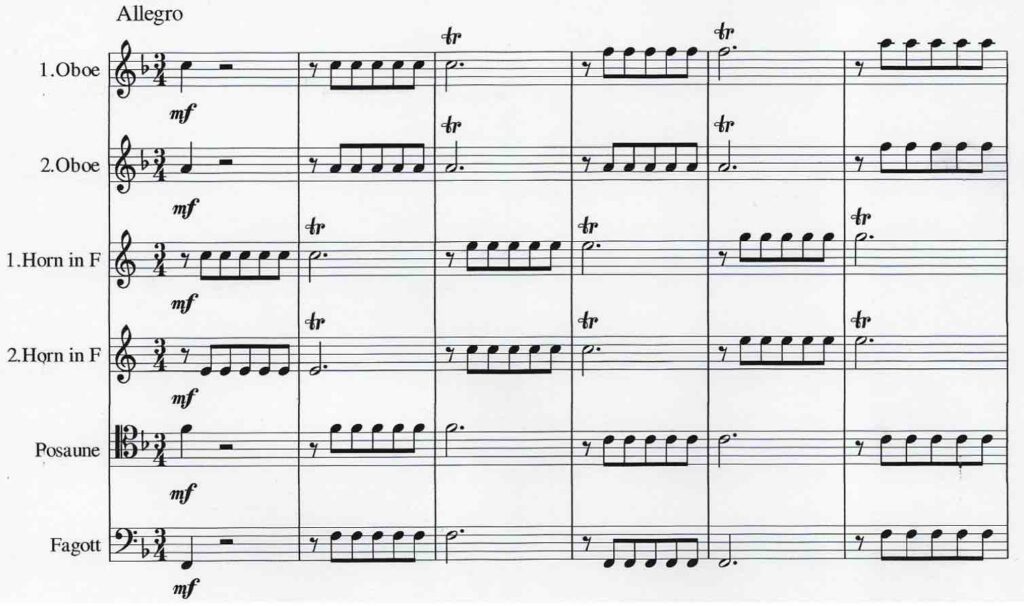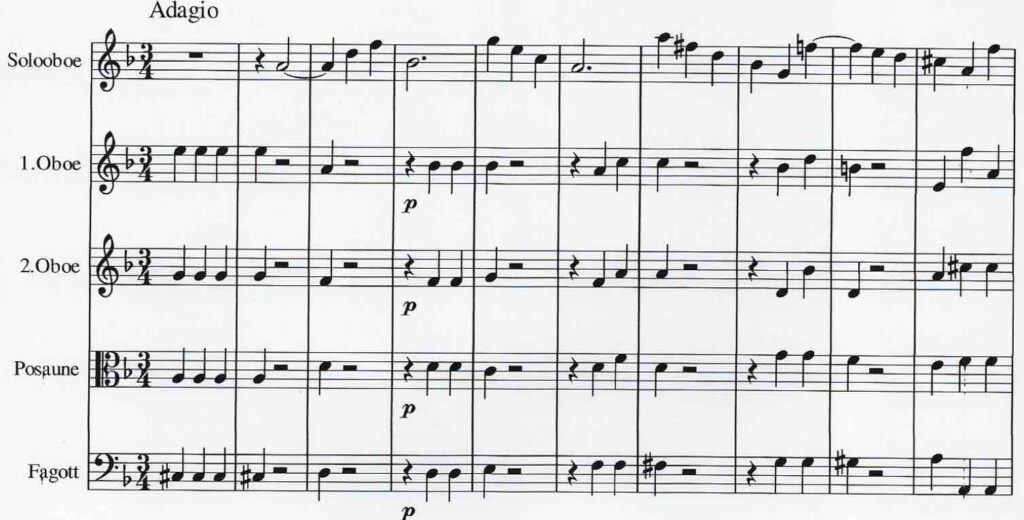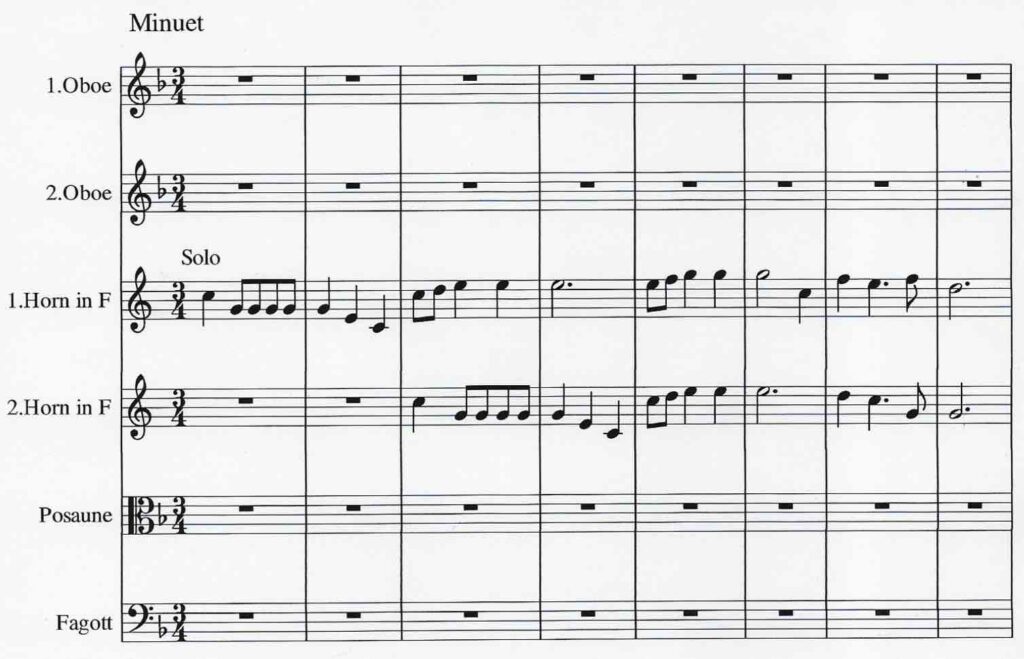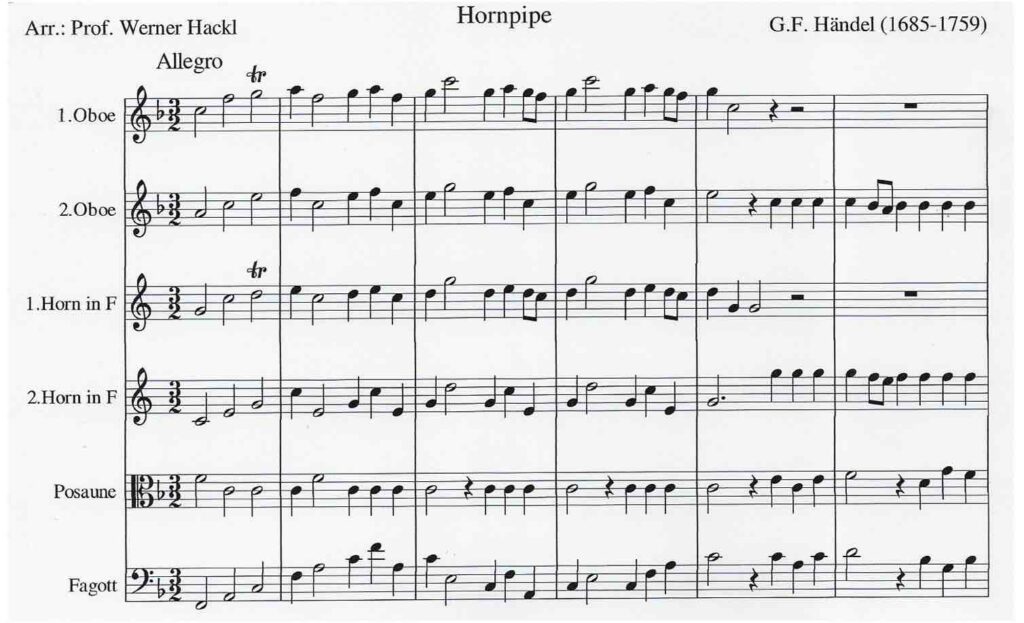Georg Friedrich Händel (1685-1759) Wassermusik / Water Music. Suite. F-Major Allegro – Air – Adagio – Menuett – Bourrée – Hornpipe






Die Wassermusik (Water Music, HWV 348, 349 und 350) von G. F. Händel ist eine Sammlung von drei Suiten mit Ouvertüre und einundzwanzig Tanzsätzen mit repräsentativem Charakter. Sie untermalte eine Lustfahrt des englischen Königs Georg I. im Sommer 1715 auf der Themse. 1714 wurde der Kurfürst Georg Ludwig von Hannover auf Grund der britischen Thronnachfolgeregelung britischer König, George I. Um seine Popularität beim Volk zu steigern, führte der neue König mehrere Wasserfahrten auf der Themse zwischen Whitehall und Chelsea durch. Georg I. zeigte sich von der Musik derart angetan, dass er einzelne Stücke daraus mehrfach wiederholen ließ. Händels Wassermusik ist als Freiluftmusik geschrieben, mit einer starken Orchesterbesetzung von zwei Flöten, zwei Oboen, Fagott, zwei Hörner, zwei Trompeten, zwei Solo-Violinen, Streicher. Zeitzeugen sprachen von einem Orchester mit fünfzig Musikern. Unser 6-teilige Suite besteht aus einem Arrangement von 2 Oboen, 2 Hörner, Posaune (ein Instrument mit enger Mensur ist vorzuziehen) und Fagott. Die Sätze der Suite können einzeln oder in einer anderen Reihenfolge gespielt werden.

The Water Music (HWV 348, 349 and 350) by G. F. Handel is a collection of three suites with an overture and twenty-one dance movements of representative character. It accompanied a pleasure trip by the English King George I in the summer of 1715 on the Thames. In 1714, the Elector George Louis of Hanover became the British King, George I, on the basis of the British succession to the throne. In order to increase his popularity with the people, the new king carried out several water trips on the Thames between Whitehall and Chelsea. George I was so impressed by the music that he had individual pieces from it repeated several times. Handel’s Water Music is written as open-air music, with a strong orchestra of two flutes, two oboes, bassoon, two horns, two trumpets, two solo violins, strings. Contemporary witnesses spoke of an orchestra with fifty musicians. Our 6-part suite consists of an arrangement of 2 oboes, 2 horns, trombone (an instrument with a narrow scale is preferable) and bassoon. The movements of the suite can be played individually or in a different order.
| sound sample / Tonbeispiel | score/parts PDF download: € 39,- | add to cart / in den Warenkorb |
